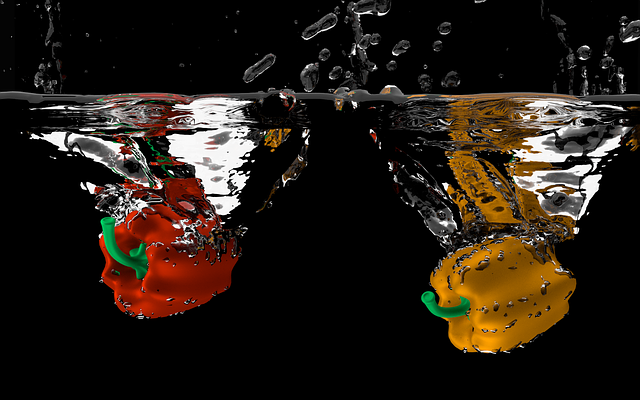Medical imaging, especially 3D and 4D techniques (CT & MRI scans), plays a vital role in diagnosis and treatment planning, but raises concerns about radiation exposure. Healthcare providers can minimize risks by understanding varying radiation levels across modalities and implementing modern safety measures like dose management, shielding, and monitoring. Advanced scanning strategies, patient selection, protective gear, and AI integration are key to ensuring safe 3D/4D imaging while improving diagnostic capabilities for better patient care.
“In the pursuit of advanced medical diagnostics, 3D and 4D imaging technologies have revolutionized visualization. While these techniques offer unprecedented detail, concerns around radiation exposure necessitate a balanced approach. This article delves into the intricacies of understanding radiation hazards in medical imaging, exploring the benefits and risks of cutting-edge 3D and 4D imaging methods. We also examine safety measures to mitigate radiation dangers and forecast future trends aimed at enhancing patient protection.”
Understanding Radiation Exposure in Medical Imaging
Medical imaging plays a pivotal role in modern healthcare, offering invaluable insights into the human body for diagnosis and treatment planning. However, one crucial aspect to consider is the potential exposure to radiation during procedures like 3D and 4D medical imaging. Understanding radiation exposure is essential to ensure patient safety.
In advanced imaging techniques, radiation is used to create detailed cross-sectional images of internal body structures. While these scans provide critical information, the radiation dose must be carefully managed to minimize risks. Different imaging modalities have varying levels of radiation exposure, with computed tomography (CT) and magnetic resonance imaging (MRI) being commonly used for 3D and 4D visualization. By implementing modern safety measures, such as advanced scanning protocols, protective shielding, and patient positioning techniques, healthcare providers can significantly reduce radiation exposure while maintaining the diagnostic quality of images.
Advanced 3D and 4D Imaging Technologies: Benefits and Risks
Advanced 3D and 4D medical imaging technologies offer unprecedented levels of detail and insight into the human body, revolutionizing diagnostic capabilities. These techniques allow radiologists to visualize anatomical structures in multiple dimensions, providing a more comprehensive understanding of diseases and conditions. For instance, 3D imaging can capture intricate details of organs and blood vessels, while 4D imaging adds temporal information, enabling dynamic observations like the movement of the heart or brain activity.
However, alongside these remarkable benefits, there are concerns regarding potential risks associated with prolonged exposure to radiation. Both 3D and 4D imaging modalities involve ionizing radiation, which can have adverse effects on cells and tissues over time. Increased scan complexity means higher radiation doses, raising the possibility of long-term health issues. Therefore, it’s crucial for healthcare providers to balance the diagnostic benefits against potential risks, ensuring patient safety through appropriate dose management strategies, advanced shielding techniques, and regular monitoring of both patients and medical staff.
Safety Measures to Minimize Radiation Hazards
In the realm of advanced imaging, such as 3D and 4D medical imaging, safety measures to minimize radiation hazards are paramount. These cutting-edge technologies offer unprecedented visual detail, but they also expose patients and healthcare workers to higher levels of ionizing radiation compared to traditional 2D methods. To mitigate these risks, medical facilities employ a range of strategies.
One key measure is the use of advanced scanning techniques that optimize image quality while minimizing dose exposure. Additionally, strict protocols for patient selection and monitoring ensure that imaging is only performed when the benefits outweigh the potential risks. Healthcare workers are also equipped with proper protective gear, and regular training sessions on radiation safety procedures help maintain a culture of vigilance and compliance.
Future Trends: Reducing Radiation Concerns in Medical Visualization
The future of medical visualization is poised for significant advancements, with a strong focus on minimizing radiation concerns in advanced imaging techniques like 3D and 4D medical imaging. Researchers and healthcare providers are constantly exploring innovative solutions to reduce exposure levels while maintaining high-quality diagnostic images. One promising trend involves the development of more efficient and targeted radiation sources, allowing for precise dosing and improved spatial resolution.
Additionally, the integration of artificial intelligence (AI) and machine learning algorithms promises to optimize imaging protocols, enabling adaptive strategies that dynamically adjust radiation doses based on patient specifics and anatomical targets. These future trends not only enhance safety but also open doors to more comprehensive and accessible medical visualization, ultimately benefiting patient care and outcomes.
Advanced 3D and 4D medical imaging offers significant benefits for diagnosis and treatment planning, but it’s crucial to balance these advantages with radiation safety concerns. By implementing robust safety measures, such as optimized protocols, protective equipment, and regular staff training, healthcare providers can minimize radiation hazards associated with these cutting-edge technologies. As we move forward, ongoing research and the development of innovative techniques aim to reduce radiation exposure, ensuring that 3D and 4D imaging continues to enhance patient care while mitigating risks.
